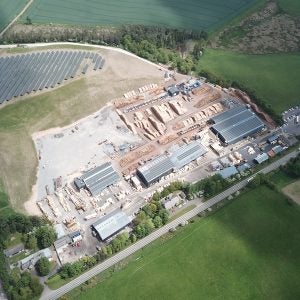A pioneering project has led to thousands of tonnes of previously inaccessible timber in Strathnavar, northern Scotland being brought to market.
The project, put together by the Forestry Commission, The Highland Council and the Highland Rail Development Council, has enabled the timber to be brought out by rail – and the first load arrived in Inverness this week.
The initiative – which was two years in the making – has unlocked 3,000ha of productive forest in Strathnaver and over the next 20 years an estimated 15,000 tonnes of timber per year will be harvested from Rosal Forest – all of which will be moved south by train.
Timber lorries are banned from using the road out of the area because of the damage they would cause so without the rail solution the timber would have remained landlocked.
Local contractors began harvesting the timber in early June and it is transported by road to Kinbrace in Central Sutherland where a loading bank has been constructed alongside the main Inverness/Wick railway line.
|
“We will bring out about 10,000 tonnes a year or more. It is a variety of small roundwood, which will go to the Nexfor factory at Dalcross, and sawlogs which will go to our sawmill at Mosstodloch” |
|
James Jones acting managing director Michael Leslie |
The timber is transported to Inverness during the night while the line is free from passenger trains. On arrival the wagons go to the city’s EWS rail yard and the timber is moved straight on to lorries to be transported away.
James Jones and Sons has won the initial five year Forestry Commission contract for the Rosal wood. The company’s acting managing director Michael Leslie said: “We will bring out about 10,000 tonnes a year or more. It is a variety of small roundwood, which will go to the Nexfor factory at Dalcross, and sawlogs which will go to our sawmill at Mosstodloch in Morayshire.”






